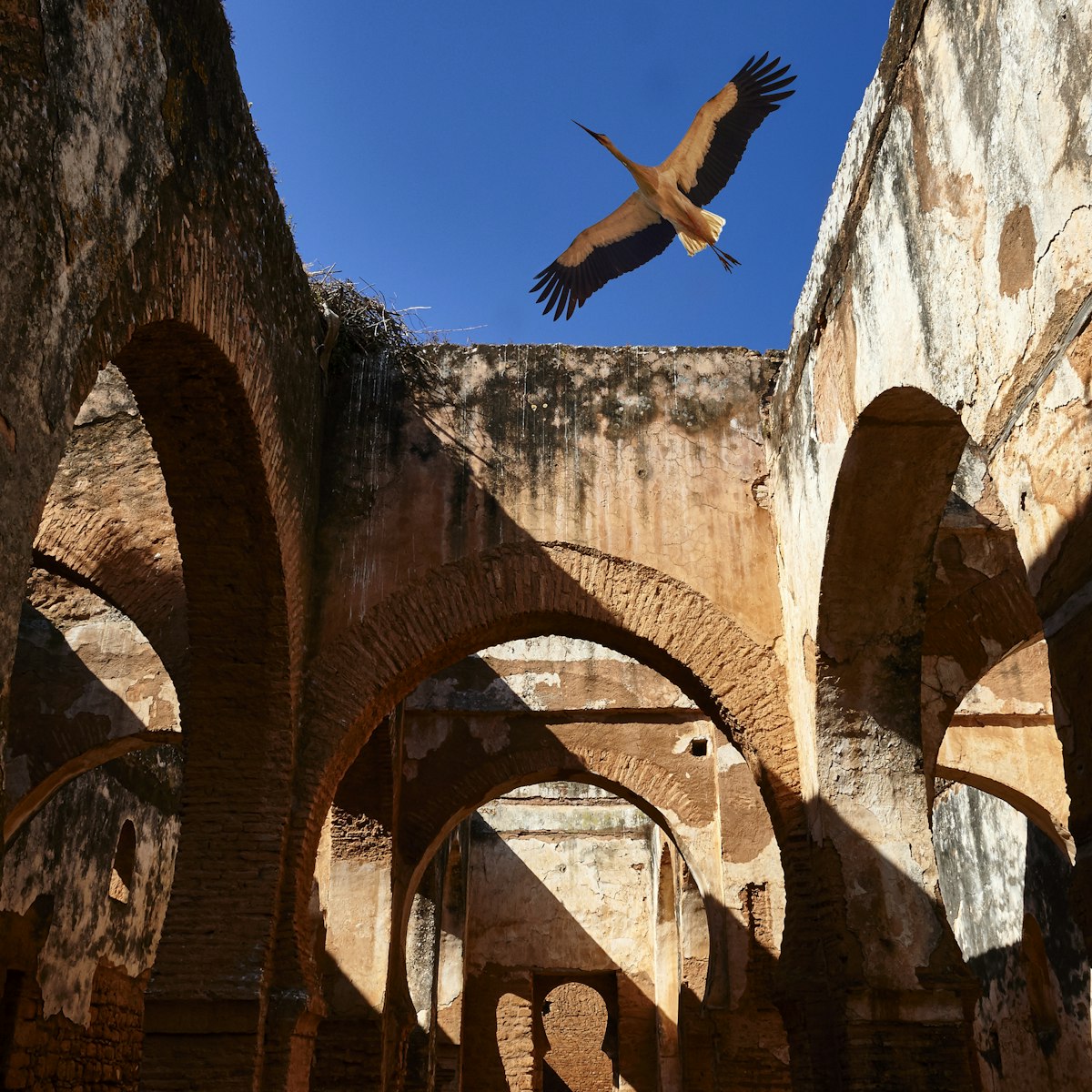When the French arrived in the early 20th century, this walled medina by the sea was the full extent of the city. Built on an orderly grid in the 17th century, it is small enough to be easily explored in half a day, but tangled enough to make getting lost inevitable. The main market street is Rue Souika, with local shopping on its western stretch and shops geared largely to tourists in the covered Souq As Sebbat to its east.
The Grande Mosquée de Rabat Medina, a 14th-century Merinid original that has been rebuilt in the intervening years, marks the start of the Souq As Sebbat. If you continue past the Rue des Consuls (so called because diplomats lived here until 1912), you’ll come to the mellah (Jewish quarter) just before Bab El Bahr and the river. Turning north along Rue des Consuls, which is home to many jewellery shops, will take you to one of the more interesting areas of the medina, with fanadiq (ancient inns used by caravans) and some grand former diplomatic residencies. At its northern end the street terminates in an open area that was the setting for slave auctions in the days of the Sallee Rovers. From here you can make your way up the hill to the Kasbah des Oudaias.
Most eateries are on the major pedestrian thoroughfare of Ave Mohammed V, which runs between the Medina Rabat tram stop and Ave Laalou, the medina's northern boundary. Popular fast-food joints with street seating, budget-friendly Restaurant de la Libération and a parade of street vendors sell snacks such as babbouche (cooked snails) served in a fragrant and spicy soup, freshly squeezed sugar-cane juice, syrup-drenched pastries, freshly baked bread and whatever fresh fruit is in season.


